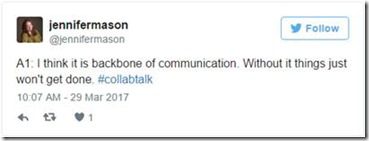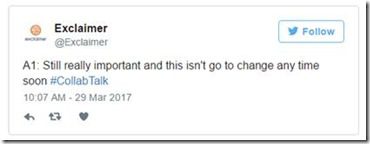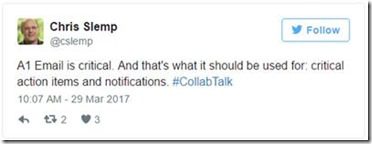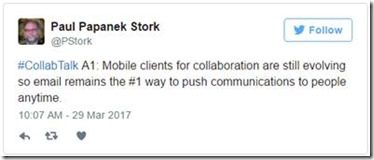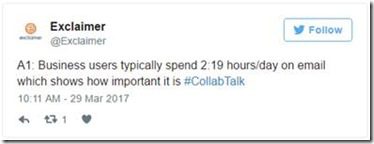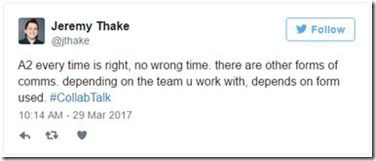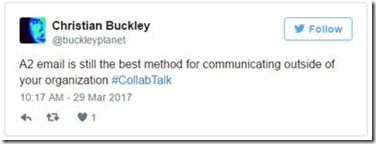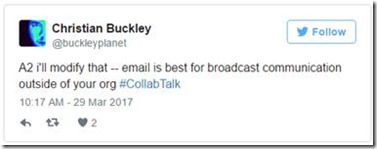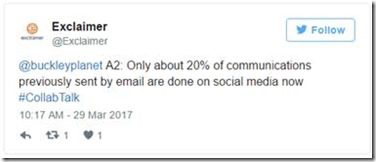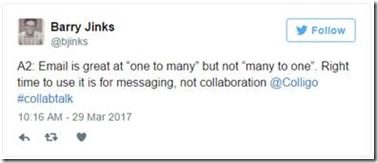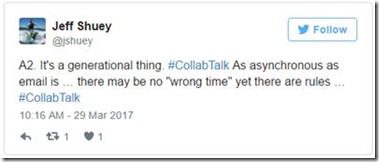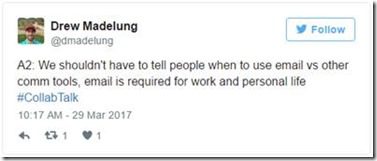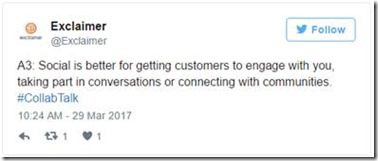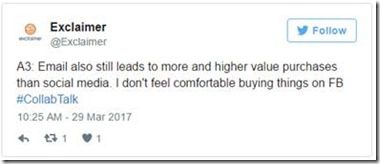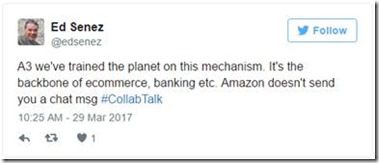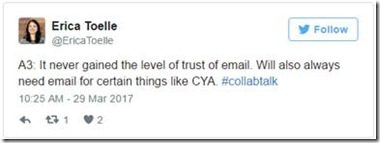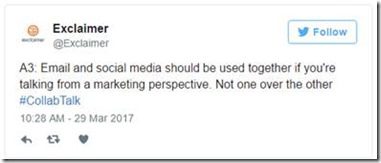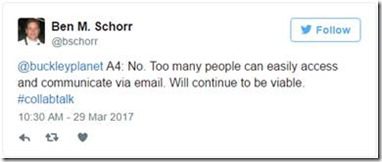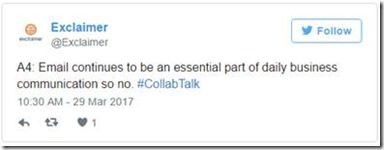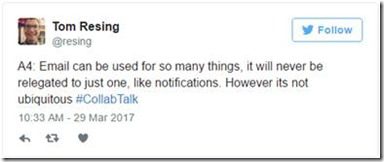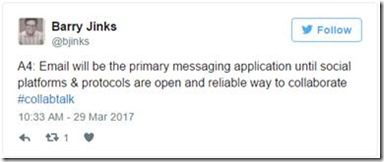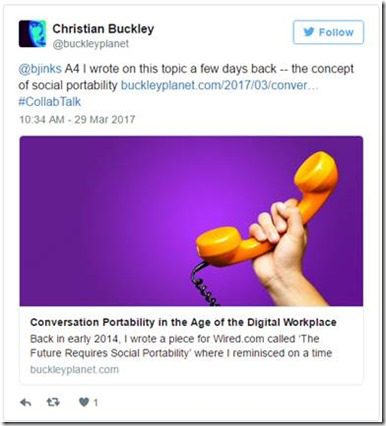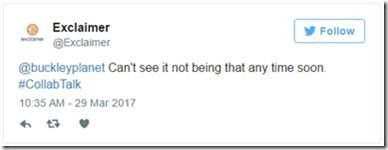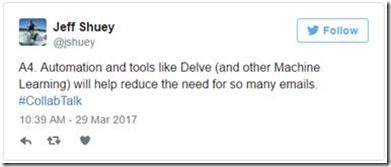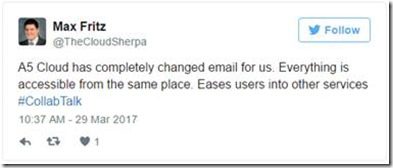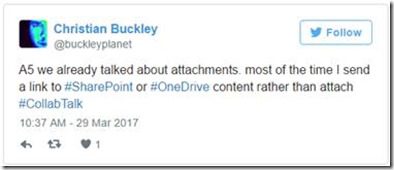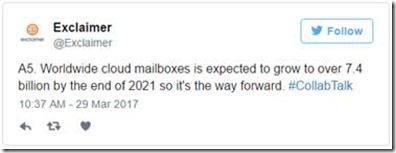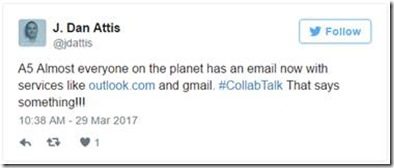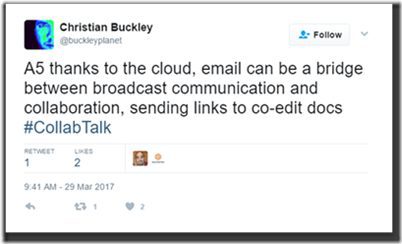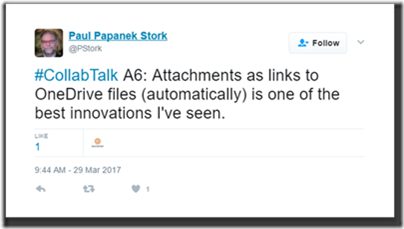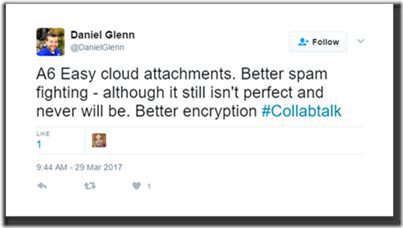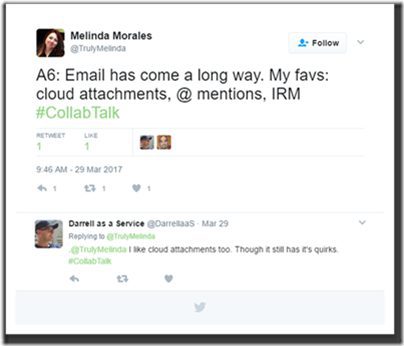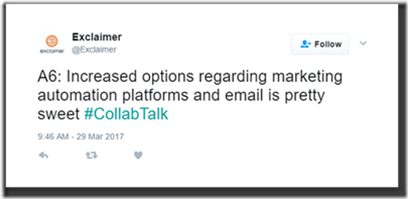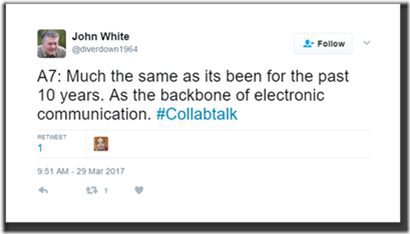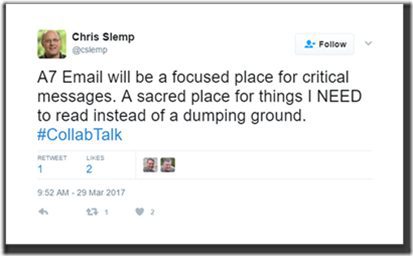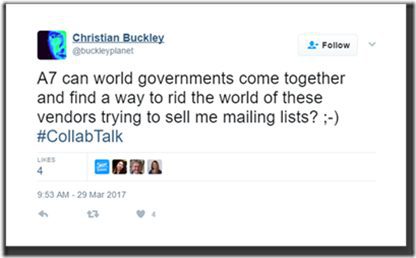Email and the Modern Digital Workplace
The move to the Digital Workplace will not happen at the flip of a switch, and yet that doesn’t stop tech journalists and IT die-hards from making predictions and forecasts that lean heavily on current trends – while often ignoring the cultural nuances that can make change difficult. A great example: all of the predictions a few years back that social collaboration would be the end of email. While there have certainly been innovations to reduce spam and improve the effectiveness of email communications, we are nowhere near the end of life of this critical aspect of modern communication and collaboration.
We all love new technology, and therefore it is easy to get caught up in the fevered pitch of the latest marketing hype. However, productivity use cases that are highlighted on stage at major tradeshows rarely match the reality on the ground. Many of the “hot” tools that hit the market tend to be one-dimensional, focusing on “fractional” scenarios and specific productivity features, rather than meet the needs of our end-to-end business needs. It’s safe to say that most organizations have some of vision of a Digital Workplace that they are working toward, looking for real-world solutions that can help make our business activities more streamlined, efficient, and intelligent. Email continues to be an important technology to help us bridge the technology and business process gaps.
One of my favorite analogies comes from my days working in telecommunications: You can have a brand new, high-speed fiber network available in your neighborhood, yet the connection from the fiber line at the street to your house might be an old copper line. It doesn’t matter how fast the fiber connection is – your internet connection will be limited to the speed of that old copper line. The same can be true for improvements to some aspects of your business processes and systems, such as your records management capabilities. If you don’t also make appropriate adjustments to your team collaboration and communication capabilities, as well as your team culture, you’re not going to get the results you were expecting.
There are many different ways in which you can tailor your environment to meet the unique needs of your organization, and the answer is not necessarily the purchase of another technology solution. It may require a tighter alignment between the technology already in place and your critical use cases. Without a strong alignment between our technology and key business activities, many end users will turn to unsupported applications and services to get their work done. However, when organizations take the time to understand how their employees work, and refine the movement between workloads, those employees often become more engaged.
To enhance team productivity, and achieve your vision of a Digital Workplace, it is important to understand how people actually accomplish their work. More often than not, email plays a critical role in these activities, and is the connector between disparate business workloads.
Communication as a Connector
The topic of end user productivity is one that I have written about for many years. Starting my career more than 25 years ago as a business analyst and technical writer, I have often acted as a liaison between IT or engineering and various business stakeholders, helping translate technical topics for business users, and representing the needs of the business to technical teams. Back in 2012, I launched my monthly community event via Twitter called the ‘CollabTalk TweetJam’ in which technical and non-technical participants could come together to discuss focused topics around collaboration, productivity, and communication. For the March 2017 edition of CollabTalk, we focused on the topic “What is the Role of Email in the Digital Workplace?” As you can see in the related blog post, we invited a variety of Microsoft MVPs, community influencers, and customers to share their ideas and experiences on the topic, and were joined by members of the Exclaimer team, who sponsored the event, along with analytics tool provider tyGraph.
The tweetjam model is fairly simple: as the host, I post a series of questions over the course of an hour, and a panel of experts – as well as anyone else who would like to participate via Twitter – provide their answers. What happens next is a fast-paced deluge of conversation. Most of it stays on topic, but there are also many side conversations that spring up, which can provide some of the most interesting insights.
While there has been much talk of social replacing email (mostly by vendors with an agenda), the tweetjam participants largely agreed that this energy is misplaced. The reality is that with the focus shifting toward the Digital Workplace, our collaboration needs (with email being a major part of those needs) has expanded, and email continues to be an important aspect of future planning. While the volume of email that organizations receive has decreased overall (much improved spam management), email’s value within the enterprise has remained solid. What we have learned is that email alone is an insufficient collaboration mechanism – but when used in concert with social and document collaboration capabilities, it provides an essential role within our Digital Workplace strategies.
Community Discussion
The March 2017 CollabTalk tweetjam was one of the most active discussions on record, with 981 tweets, 180,000 social accounts reached, and 5.87 million impressions during the one-hour event, which trended nationally on Twitter. You can find the full stats at http://bit.ly/CollabTweets
You can also find the entire tweet-by-tweet discussion on Storify, but the following is a sample of some of the dialogue from our panel and participants:
Question 1: How important is email to communication and collaboration?
Question 2: When is the right time to use email, and when is the wrong time?
Question 3: Social was *supposed* to replace email. What happened?
Question 4: Will email be reduced to a notification service, leveraged by other apps? Why or why not?
Question 5: How has the cloud impacted the way your organization uses/looks at email?
Question 6: What are your favorite email innovations from the past 5 years, and why?
Question 7: What will be email’s role in the Digital Workplace going forward? (Think 10-year road map)
The Future Roadmap for Email
As you can tell from this snapshot, the discussions can be casual and fun, but the caliber of participants and quality of their input is fantastic – and I always walk away from these discussions having received value for participating. Again, I invite you take read through the entire discussion captured on Storify, and hear from some of the world’s leading experts on collaboration.
What is the future for email, and what role will it play within your own Digital Workplace strategy? From this tweetjam discussion, it was clear that the overwhelming majority of participants agreed that email will continue to play an important role in collaboration and communication.
While there is no single system, tool, or platform that will meet every collaboration and communication need, there is much you can do with the tools you have in place today to optimize for performance and efficiency. The same holds true for email, where improvements to information rights management (IRM), a policy change to re-train end users away from attaching documents and instead leverage the cloud for sharing content, and improving the quality and consistency of email by using solutions like Exclaimer, can ensure your email system is providing business value.
In the modern enterprise, it is important to understand:
- what you are trying to deliver for your business,
- what the core capabilities of your chosen technologies can provide,
- how these various tools perform in actual work scenarios, and
- what processes, tools, and measurements are needed to identify what value is being created, how successful they are, and where you need to further optimize and adjust to better fit your company culture.
Planning out your Digital Workplace strategy requires a holistic approach. It’s a combination of people, process, and technology – and as always, email sits across all three areas.

